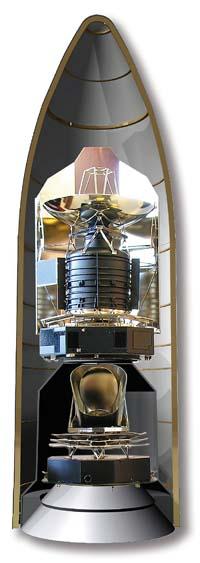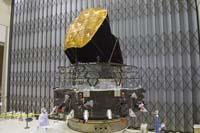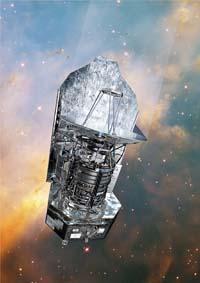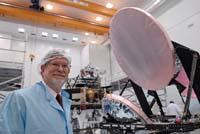The origin of the universe

The objective of the Planck spacecraft will be to find indications of the origin of the universe and to analyze its evolution from then on until today. In fact, the origin of the universe remains a still diffuse field of knowledge. To respond to this, he will analyze cosmic background radiations in the form of a microwave.
Especially John C. Mather and George F. This mission aims to contribute to completing the work of physicists Smoot. These scientists received the 2006 Nobel Prize in Physics for their work on cosmic microwave background radiation with the COBE satellite.
Study of the temperature
Cosmic microwave background radiation is not emitted by a given object, but is dispersed throughout the universe. The Planck spacecraft has been designed to measure this radiation and perform all necessary measurements. The satellite will measure the temperature changes that occur mainly in cosmic microwave background radiation. The temperature is an essential variable to clarify the origin and evolution of the universe. The compactness of the universe can be measured in part by temperature and, depending on its compactness, the quality of the cosmos. And it is that galaxies were born precisely in the most compact parts of the universe.

The temperature of this cosmic microwave background radiation is known and very cold, about 2.7 K (-270 °C). However, experts seek to obtain more accurate data. And that is, that temperature is not the same everywhere in the universe, there are hotter, colder areas. These temperature differences are not very high, but they could be enough, among other things, to receive information about galaxy formation.
After all they want to get the "photo" of the sky, but in that photo the planets and stars will not appear, but only the temperatures. In fact, the cooling of the instruments of this spacecraft at temperatures around absolute zero allows to measure with enormous precision the smallest temperature variations of cosmic microwave background radiation. The investigation of this cosmic background radiation is carried out from its origin, from the explosion of the Big Bang to the present day.
The spacecraft Planck, of 1,900 kilograms of weight, has an approximate height and diameter of 4.2 meters. Cosmic microwave background radiation will be received with a telescope of a primary mirror 1.5 meters long. The received radiation will focus on two high-sensitivity detectors: LFI (Low Frequency Institute) and HFI (High Frequency Technology).
The first will use several radio receivers to amplify the received signal and convert it into an electrical signal. That is, the receiver will amplify the signal received from the telescope and it will become an electrical signal. On conventional radios, the signal received would be sent to a speaker. In the Planck spacecraft, this signal will be taken to a computer for measurements or revisions.
The second will turn the radiation into heat. Later this heat will be measured with a small electric thermometer. These signals will be supplied by a computer in temperature data.

The ESA technicians will place all the devices protected from the influence of the Sun and the Moon to avoid any interference.
The hidden part of the universe
The Planck spacecraft will have as its destination the Herschel spacecraft during the first two or three hours of travel. Then, Herschel himself will act on his own. In less than six months, the Herschel spacecraft is 1.5 million kilometers from Earth around the Lagrange L2 point. The spacecraft has been designed for three years.
It will help to see the hidden universe so far. For this purpose, the Herschel satellite, 7.5 meters long and 4 meters wide, of 3.3 tons of weight, contemplates its telescope towards the universe avoiding, among other things, the infrared radiation emitted by the Earth. It can cause interference in data collection.
In fact, Herschel will work on a wavelength that the human being cannot see -- infrared -- because the universe emits mainly this type of radiation. Working in the infrared, what will the Herschel spacecraft tell us? That is, what is going to communicate to us? Try to unravel the composition of the Milky Way, our galaxy and other objects of the solar system such as planets, satellites or comets. He will also learn how galaxies and stars were formed and evolved.

To interpret the information collected by the telescope, the spacecraft consists of three tools: PACS (Photodetector Array Camera and Spectrometer), SPIRE (Spectral and Photometric Imaging Receiver) and HIFI (Heterodyne Technology for the Far Infrared). PACS and SPIRE cameras and spectrometers will collect six-color images in the remote infrared. HIFI, for its part, is a high resolution spectrometer that could be used to obtain information on the chemical composition, kinematics and physical environment of the infrared sources.
As you can see, both missions have taken the name of two prestigious scientists, Max Planck and William Herschel. Undoubtedly, these scientists would also know at ease the current new technological advances, unfortunately they will not have the opportunity to do so. We, if everything goes well, will soon have the opportunity to know better the hidden clues of the universe.






